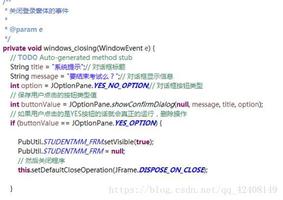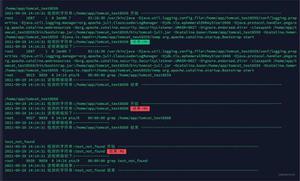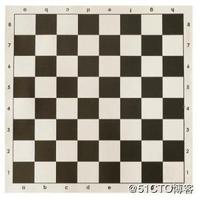java实现的顺时针/逆时针打印矩阵操作示例
java实现的顺时针/逆时针打印矩阵操作。分享给大家供大家参考,具体如下:
public class SnakeMatrix {
/**
* 定义矩阵的阶数
*/
private int n;
//填充矩阵的值
private int k = 1;
private int[][] data;
/**
* 定义矩阵移动的方向
*/
public enum Direction {
left, right, up, down,
}
SnakeMatrix(int n) {
this.n = n;
data = new int[n][n];
}
public void clockwisePrintMatrix() {
//定义行数
int rowLen = data.length;
//定义列数
int columnLen = data.length;
//移动方向
Direction direction = Direction.right;
//定义上边界
int upBound = 0;
//定义下边界
int downBound = rowLen - 1;
//定义左边界
int leftBound = 0;
//定义右边界
int rightBound = columnLen - 1;
//矩阵当前行数
int row = 0;
//矩阵当前列数
int column = 0;
while (true) {
data[row][column] = k++;
if (upBound == downBound && leftBound == rightBound) {
// System.out.println(" upBound :"+upBound +" downBound :"+downBound+" leftBound :"+leftBound +" rightBound :"+rightBound);
break;
}
switch (direction) {
case right:
if (column < rightBound) {
++column;
} else {
++row;
direction = Direction.down;
++upBound;
}
break;
case down:
if (row < downBound) {
++row;
} else {
--column;
direction = Direction.left;
--rightBound;
}
break;
case up:
if (row > upBound) {
--row;
} else {
++column;
direction = Direction.right;
++leftBound;
}
break;
case left:
if (column > leftBound) {
--column;
} else {
--row;
direction = Direction.up;
--downBound;
}
break;
default:
break;
}
}
for (int i = 0; i < n; i++) {
for (int j = 0; j < n; j++) {
System.out.printf("%2d%s", data[i][j], " ");
}
System.out.println();
}
}
public void anticlockwisePrintMatrix() {
int rowLen = data.length;
int columnLen = data.length;
int leftBound = 0;
int rightBound = columnLen - 1;
int upBound = 0;
int downBound = rowLen - 1;
int row = 0;
int column = 0;
Direction direction = Direction.down;
while (true) {
data[row][column] = k++;
if (rightBound == leftBound && upBound == downBound) {
break;
}
switch (direction) {
case down:
if (row < downBound) {
row++;
} else {
column++;
direction = Direction.right;
leftBound++;
}
break;
case right:
if (column < rightBound) {
column++;
} else {
row--;
direction = Direction.up;
downBound--;
}
break;
case up:
if (row > upBound) {
row--;
} else {
direction = Direction.left;
column--;
rightBound--;
}
break;
case left:
if (column > leftBound) {
column--;
} else {
direction = Direction.down;
row++;
upBound++;
}
break;
default:
break;
}
}
for (int i = 0; i < n; i++) {
for (int j = 0; j < n; j++) {
System.out.printf("%2d%s", data[i][j], " ");
}
System.out.println();
}
}
}
首先呢上面是定义一个工具类,
public class MainActivity extends AppCompatActivity {
@Override
protected void onCreate(Bundle savedInstanceState) {
super.onCreate(savedInstanceState);
setContentView(R.layout.activity_main);
int number = 5;
SnakeMatrix snakeMatrix = new SnakeMatrix(number);
snakeMatrix.anticlockwisePrintMatrix();
//snakeMatrix.clockwisePrintMatrix();
}
}
直接进行使用,有两个方法,一个正序一个倒序
更多关于java算法相关内容感兴趣的读者可查看本站专题:《Java数据结构与算法教程》、《Java操作DOM节点技巧总结》、《Java文件与目录操作技巧汇总》和《Java缓存操作技巧汇总》
希望本文所述对大家java程序设计有所帮助。
以上是 java实现的顺时针/逆时针打印矩阵操作示例 的全部内容, 来源链接: utcz.com/z/318189.html









